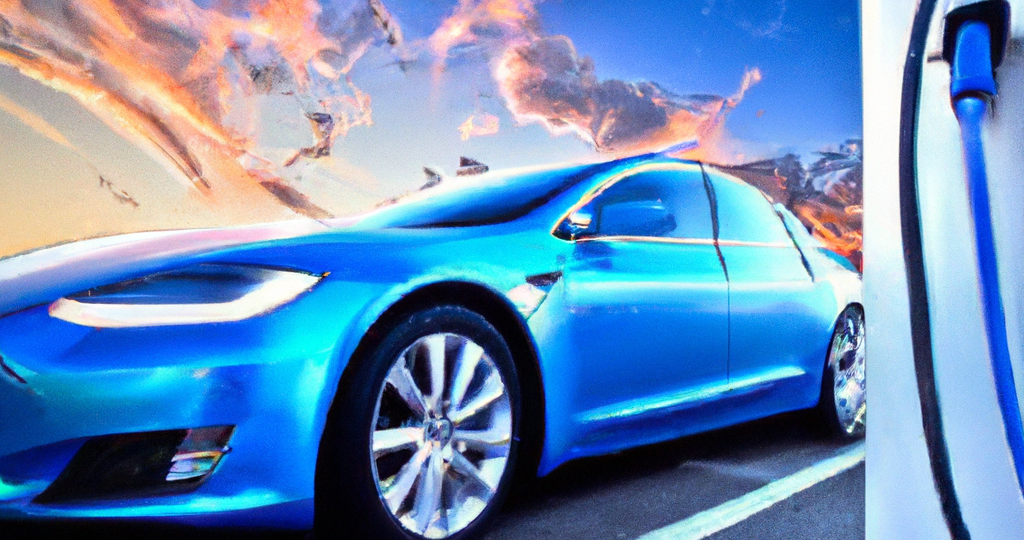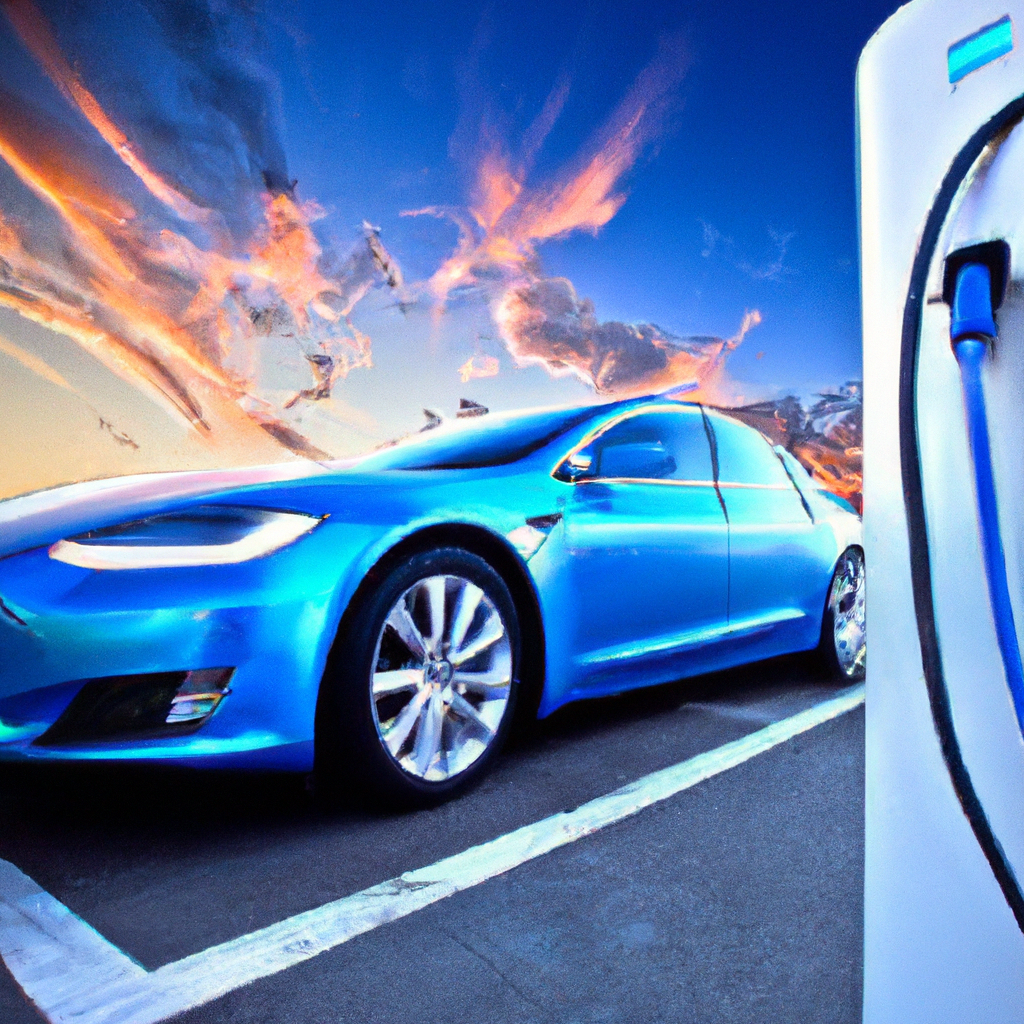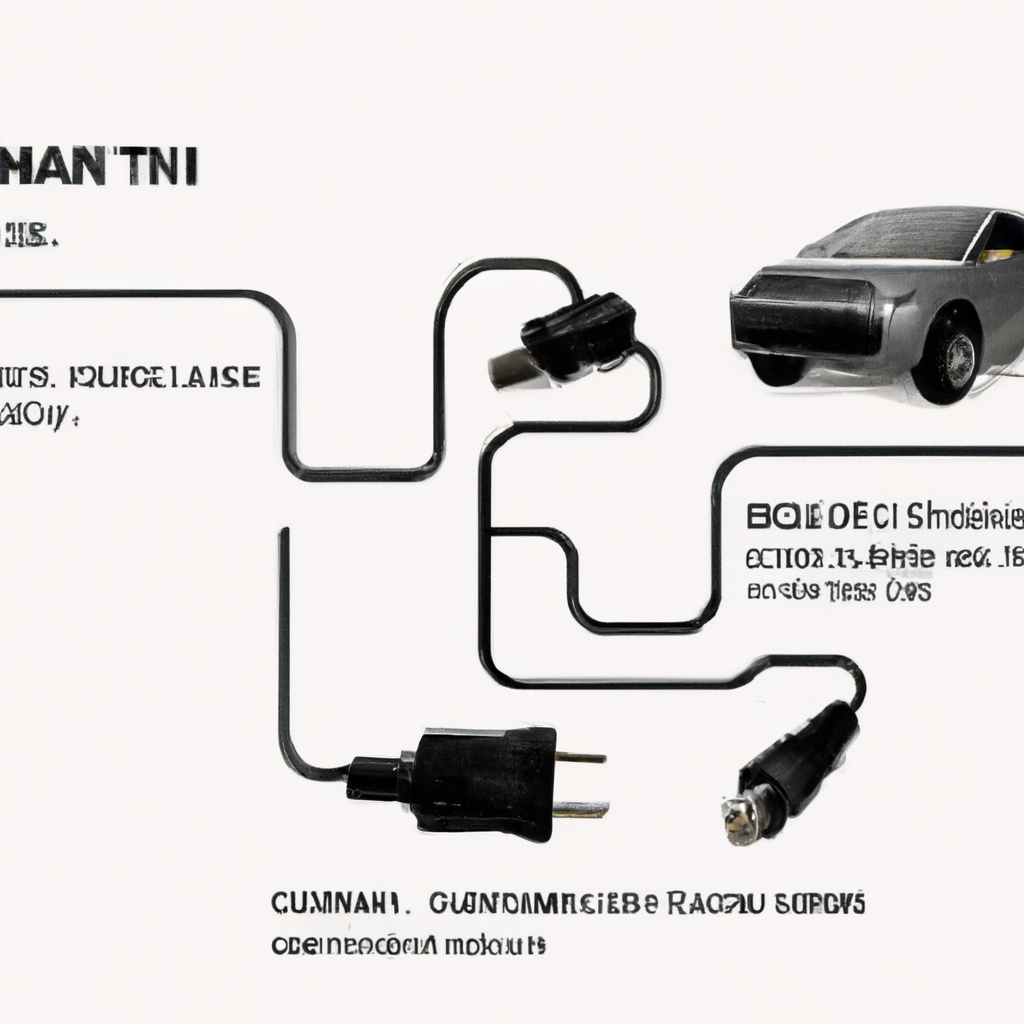Ultra-Fast EV Charging: Reducing Downtime On Long Trips
September 30, 2023 | by Jacob Kang

Embarking on long trips with an electric vehicle (EV) can be both exciting and daunting. With the rise in popularity of EVs, the need for efficient and reliable charging infrastructure has become increasingly important. In this article, we explore the concept of ultra-fast EV charging and how it is revolutionizing the way we travel. By reducing downtime and addressing the range anxiety associated with long trips, ultra-fast EV charging is paving the way for a more seamless and enjoyable driving experience. With advancements in technology and expanding charging networks, EV owners can now embark on long journeys with a newfound confidence, knowing that their charging needs will be met efficiently and swiftly. Get ready to discover the world of ultra-fast EV charging and the benefits it brings to those venturing on long trips.

This image is property of images.pexels.com.
1. The Need for Ultra-Fast EV Charging
1.1 Growing Popularity of Electric Vehicles
The popularity of electric vehicles (EVs) has been steadily growing in recent years, with more and more people recognizing the benefits of these vehicles for both the environment and their own personal finances. As EV technology continues to improve and become more accessible, the demand for EV charging infrastructure has also increased. However, one of the major challenges for EV owners is the time it takes to fully charge their vehicles, especially on long trips. This is where ultra-fast EV charging comes into play.
1.2 Long Trips and Range Anxiety
Owning an electric vehicle has many advantages, but one of the biggest concerns for EV owners is range anxiety – the fear of running out of battery power before reaching their destination. This anxiety is particularly heightened during long trips, where the need for frequent charging can significantly increase travel time. Ultra-fast charging technology addresses this issue by providing a much quicker charging solution, drastically reducing the downtime and alleviating range anxiety for EV owners.
1.3 Importance of Reducing Downtime
Reducing downtime is crucial for the widespread adoption of electric vehicles. Just as drivers of gasoline-powered vehicles expect to quickly refuel at gas stations and continue their journeys, EV owners should have the same level of convenience and efficiency when it comes to charging their vehicles. Ultra-fast EV charging enables shorter charging times, making it more feasible for EV owners to take long trips without significant interruptions. This not only enhances the overall user experience but also encourages more people to make the switch to electric vehicles.
2. Understanding Ultra-Fast EV Charging Technology
2.1 Benefits of Ultra-Fast Charging
Ultra-fast charging technology offers several benefits compared to conventional EV charging methods. Firstly, it significantly reduces charging time, allowing EV owners to quickly charge their vehicles and get back on the road. This high-speed charging capability is especially advantageous for long trips, as it minimizes the duration of charging stops and enables drivers to reach their destinations more efficiently. Additionally, ultra-fast charging can also reduce the need for multiple charging stations along a route, thereby optimizing the utilization of charging infrastructure and reducing costs.
2.2 Types of Ultra-Fast Charging Technologies
There are various types of ultra-fast charging technologies being developed and deployed to meet the increasing demand for faster and more efficient EV charging. One of the most well-known technologies is DC fast charging, also known as Level 3 charging. DC fast charging uses direct current to quickly charge the vehicle’s battery, enabling a significant charge within a short period of time. Another promising technology is High-Power Charging (HPC) which offers even faster charging rates, reducing the total charging time to as little as just a few minutes.
2.3 Charging Infrastructure
In order for ultra-fast charging to be effective and accessible, a robust charging infrastructure needs to be in place. This includes the installation of high-powered charging stations along major highways and strategic locations, ensuring that EV owners have convenient access to charging facilities during their long trips. The charging infrastructure should also allow for scalability and future expansion as the number of EVs on the roads continues to grow. Collaborations between charging infrastructure providers, automakers, and governments are essential to establish and maintain a reliable and comprehensive charging network.
2.4 Compatibility and Standards
To ensure seamless and efficient charging experiences for EV owners, it is crucial to establish compatibility and standards for ultra-fast charging technology. Standardization allows for interoperability between different EV models and charging stations, eliminating the need for multiple adapters or specialized charging equipment. Common charging standards, such as the Combined Charging System (CCS) and the CHAdeMO protocol, ensure that EVs from different manufacturers can utilize the same charging infrastructure and receive the benefits of ultra-fast charging.
2.5 Safety Considerations
Safety is of utmost importance when it comes to ultra-fast EV charging. The high power levels involved in ultra-fast charging require robust safety measures to protect both the vehicle and the charging infrastructure. Charging cables and connectors must be designed to handle the increased currents and voltages without compromising safety. Additionally, charging stations should be equipped with advanced monitoring and protective mechanisms to prevent overheating and other potential hazards. Safety standards and regulations play a vital role in ensuring the reliable and secure operation of ultra-fast charging systems.
3. Current State of Ultra-Fast Charging Stations
3.1 Availability
The availability of ultra-fast charging stations is rapidly increasing as the demand for fast charging solutions grows. Charging infrastructure providers are actively expanding their networks and deploying high-power charging stations in key locations, such as highway rest areas, shopping centers, and major transportation hubs. This growing availability is making it increasingly convenient for EV owners to access ultra-fast charging, particularly during long trips where fast charging is essential.
3.2 Locations and Coverage
Strategic placement of ultra-fast charging stations is crucial to ensure optimal coverage and accessibility. These stations should be strategically located along major transportation routes, enabling EV owners to easily find and access them during their long trips. Additionally, charging stations should also be installed in urban areas, providing convenient charging options for EV owners who primarily use their vehicles for daily commuting. The goal is to establish a comprehensive charging network that covers a wide geographic area and caters to the needs of all types of EV owners.
3.3 Charging Speeds and Capacity
The charging speeds and capacity of ultra-fast charging stations are continually improving to meet the increasing energy demands of electric vehicles. Currently, ultra-fast charging stations can deliver power levels of up to 350 kilowatts (kW), enabling a significant boost in charging speed compared to slower charging alternatives. These high-power charging rates allow EV owners to quickly replenish their batteries and minimize downtime during long trips. As the technology advances, it is expected that even higher charging speeds and capacities will be achievable, further reducing charging times.
3.4 Cost and Pricing Models
The cost of ultra-fast charging can vary depending on the charging infrastructure provider and the specific pricing model in place. Some charging stations may offer free or subsidized charging to promote the adoption of electric vehicles, while others may implement pay-per-use or subscription-based pricing structures. The cost of ultra-fast charging is influenced by factors such as the electricity rates in the area, the power capacity of the charging station, and any additional amenities or services provided at the charging location. EV owners should consider these cost factors when planning their charging strategies for long trips.
3.5 Network Expansion
The expansion of ultra-fast charging networks is a key focus for both charging infrastructure providers and automakers. Collaborative efforts are being made to establish partnerships and alliances that aim to accelerate the deployment of charging stations and ensure comprehensive coverage. Governments are also playing a crucial role in supporting network expansion through various initiatives, such as funding programs and grants for charging infrastructure development. As the demand for ultra-fast charging continues to rise, the network expansion efforts are expected to expand at an even faster pace, further enhancing the accessibility and convenience of this technology.
4. Importance of Location Planning for Ultra-Fast Charging Stations
4.1 Strategic Placement for Accessibility
Strategic placement of ultra-fast charging stations is essential to ensure optimal accessibility for EV owners. These stations should be located along major highways and transportation routes, making it convenient for drivers to access them during their long trips. Consideration should also be given to the proximity of amenities such as restrooms, food, and shopping facilities to provide a more pleasant experience for EV owners while they wait for their vehicles to charge. Good location planning ensures that ultra-fast charging stations are integrated into the existing infrastructure in a way that maximizes convenience and usability.
4.2 Integration with Existing Infrastructure
Integrating ultra-fast charging stations with existing infrastructure is key to minimize the costs and disruptions associated with new construction. By leveraging existing electrical grids and power supply infrastructure, charging stations can be installed more efficiently and cost-effectively. This integration also enables the utilization of renewable energy sources, such as solar or wind power, to further enhance the environmental sustainability of ultra-fast charging. Collaboration with utility companies and local authorities is crucial to ensure the smooth integration of charging stations with the existing infrastructure.
4.3 Balancing Demand and Capacity
When planning the placement of ultra-fast charging stations, it is important to consider the balance between the expected demand and the charging capacity of each station. The goal is to avoid situations where multiple EVs are waiting to charge, causing congestion and potential dissatisfaction among EV owners. By analyzing travel patterns, traffic data, and the projected growth of EV adoption, charging infrastructure providers can strategically allocate resources and ensure that there is sufficient charging capacity to meet the demand at each location. This proactive approach helps minimize waiting times and enhance the overall charging experience.
4.4 Site Selection Considerations
Various factors need to be taken into account when selecting sites for ultra-fast charging stations. These considerations include the availability of suitable electrical infrastructure to support high-power charging, the proximity to major transportation routes and amenities, and the feasibility of obtaining necessary permits and approvals from authorities. Environmental factors, such as air quality and noise pollution, should also be considered to minimize any potential negative impacts on the surrounding areas. Thorough site selection assessments help ensure that the chosen locations are suitable for ultra-fast charging stations and align with the overall goals of the charging infrastructure provider.

This image is property of images.pexels.com.
5. Ultra-Fast Charging Technologies in Development
5.1 High-Power Charging
High-Power Charging (HPC) is an emerging technology that aims to further enhance the charging speed and efficiency of electric vehicles. HPC utilizes advanced power electronics and charging protocols to deliver even higher power levels than currently available ultra-fast charging stations. With HPC, EV owners will be able to charge their vehicles in a matter of minutes, similar to the time it takes to refuel a gasoline-powered vehicle. The development of HPC technology is expected to revolutionize the EV charging experience and eliminate any remaining barriers to electric vehicle adoption.
5.2 Wireless Charging
Wireless charging is another innovative technology being explored for ultra-fast EV charging. This technology allows EVs to be charged without the need for physical connectors or cables. Instead, power is transferred through an electromagnetic field between a charging pad on the ground and a receiver installed in the vehicle. Wireless charging offers the convenience of simply parking over the charging pad, eliminating the need for manual plug-in connections. While wireless charging is currently slower than traditional wired charging methods, ongoing research and development aim to improve its efficiency and charging speeds.
5.3 Battery Swapping
Battery swapping is a unique approach to ultra-fast charging that involves replacing the depleted battery of an electric vehicle with a fully charged one. This method eliminates the need for charging infrastructure and significantly reduces charging times to mere minutes. Battery swapping stations can be strategically placed along major transportation routes, enabling EV owners to quickly swap their batteries and continue their journeys without any downtime. While battery swapping technology is still in its early stages of development, it holds great potential as an alternative charging solution for long trips and situations where ultra-fast charging infrastructure may not be readily available.
5.4 Advanced Battery Technology
Advancements in battery technology are crucial for the continuous improvement of ultra-fast charging capabilities. The development of high-energy-density batteries with fast-charging capabilities plays a significant role in reducing charging times and increasing the overall efficiency of electric vehicles. Research efforts are focused on various battery chemistries, such as lithium-ion, solid-state, and next-generation battery technologies, to unlock higher energy densities and faster charging rates. These advancements in battery technology will further enhance the performance and viability of ultra-fast EV charging solutions.
6. Challenges and Limitations of Ultra-Fast Charging
6.1 Grid Capacity and Infrastructure Upgrades
One of the primary challenges of ultra-fast EV charging is the capacity of the electrical grid to handle the high power demands. Ultra-fast charging stations require a substantial amount of electricity, which may strain the existing grid infrastructure. Upgrades and enhancements to the electrical grid are necessary to accommodate the increased power requirements and prevent overloads or disruptions. Collaboration between charging infrastructure providers, utilities, and grid operators is essential to ensure that the grid can effectively support the widespread deployment of ultra-fast charging stations.
6.2 Heat Generation and Battery Degradation
Ultra-fast charging can generate significant heat, which can have negative effects on both the charging equipment and the vehicle’s battery. Higher charging rates increase the heat generation during charging, potentially leading to overheating, thermal stress, and reduced battery life. Effective cooling systems and thermal management strategies are essential to mitigate these risks and maintain the optimal operating temperature of the charging equipment and the vehicle’s battery. Ongoing research and development efforts focus on improving heat dissipation techniques and implementing smart charging algorithms to minimize heat-related issues.
6.3 Cost and Affordability
The cost of implementing ultra-fast charging infrastructure can be a significant barrier to widespread adoption. The high-power equipment, electrical upgrades, and installation costs associated with ultra-fast charging stations can be substantial. This cost burden may limit the availability and accessibility of ultra-fast charging, particularly in regions with limited funding or resources. Collaboration between governments, charging infrastructure providers, and private investors is crucial to drive down the costs and make ultra-fast charging more affordable and accessible for all EV owners.
6.4 Market Fragmentation
The electric vehicle market is currently characterized by multiple charging protocols and connector types, which can create fragmentation and compatibility issues for ultra-fast charging. Different automakers have implemented their own proprietary charging standards, resulting in the need for multiple charging platforms and adapters for EV owners. Standardization and interoperability efforts, such as the adoption of common charging standards like CCS and CHAdeMO, aim to address this issue and ensure that EV owners can access and utilize ultra-fast charging networks regardless of the EV brand they own.

This image is property of images.pexels.com.
7. Collaborative Efforts for Expanding Ultra-Fast Charging Networks
7.1 Partnerships between Automakers and Charging Infrastructure Providers
Collaboration between automakers and charging infrastructure providers is crucial for the expansion of ultra-fast charging networks. Automakers play a significant role in driving electric vehicle adoption, and their support in the establishment of comprehensive charging infrastructure is essential. Partnerships between automakers and charging infrastructure providers enable the seamless integration of charging capabilities into electric vehicle models and ensure the interoperability of charging solutions across different manufacturers. These collaborations enhance the accessibility and convenience of ultra-fast charging for EV owners.
7.2 Government Initiatives and Funding
Governments around the world are recognizing the importance of ultra-fast charging for the widespread adoption of electric vehicles and are implementing initiatives to support its expansion. Government funding programs, grants, and incentives encourage the development of charging infrastructure and facilitate the deployment of ultra-fast charging stations. Regulatory initiatives, such as mandates for the installation of charging infrastructure in new buildings and public spaces, also promote the accessibility and availability of ultra-fast charging. Government support is crucial for accelerating the growth of ultra-fast charging networks and making them more accessible to EV owners.
7.3 Standardization and Interoperability Efforts
Standardization and interoperability are key factors in the successful expansion of ultra-fast charging networks. Efforts to establish common charging standards, such as CCS and CHAdeMO, aim to ensure that EV owners can utilize the same charging infrastructure regardless of the brand or model of their electric vehicles. Standardization not only simplifies the charging process for EV owners but also encourages the widespread deployment of charging stations by charging infrastructure providers. Collaborative initiatives among industry stakeholders, such as automakers, charging station manufacturers, and utilities, are driving the standardization and interoperability efforts forward.
7.4 Consumer Education and Incentives
Consumer education plays a vital role in increasing awareness and understanding of ultra-fast charging technology among EV owners. Educating consumers about the benefits, availability, and proper usage of ultra-fast charging helps alleviate range anxiety and encourages more EV owners to utilize fast charging solutions. Additionally, providing incentives, such as discounted charging rates or priority access to charging stations, can further motivate EV owners to embrace ultra-fast charging. Industry associations, charging infrastructure providers, and local authorities can collaborate to develop educational campaigns and incentivize the adoption of ultra-fast charging among consumers.
8. The Future of Ultra-Fast EV Charging
8.1 Continuous Improvement of Charging Speeds
The future of ultra-fast EV charging is marked by continuous improvement in charging speeds. Ongoing research and development efforts aim to further enhance the power delivery capabilities of charging stations, enabling even faster charging rates. As technology advances and battery chemistries evolve, it is expected that ultra-fast charging will become increasingly efficient and capable of delivering charging speeds comparable to the time it takes to refuel a traditional gasoline vehicle. The continuous improvement of charging speeds will drive the widespread adoption of electric vehicles and reshape the future of transportation.
8.2 Integration with Renewable Energy Sources
The integration of ultra-fast EV charging with renewable energy sources is a key focus for ensuring the sustainability and environmental benefits of electric vehicles. By harnessing solar, wind, or other renewable energy sources to power charging stations, the carbon footprint of electric vehicles can be further reduced. Integrating renewable energy generation with ultra-fast charging also helps balance energy demand, reduce reliance on fossil fuels, and support the transition to a greener energy ecosystem. Renewable energy integration is a critical component of the future of ultra-fast EV charging and the broader sustainability goals of the transportation sector.
8.3 Vehicle-to-Grid Technology
Vehicle-to-Grid (V2G) technology holds great promise for the future of ultra-fast EV charging. V2G technology enables electric vehicles to not only charge from the grid but also feed electricity back into the grid when needed. This bidirectional flow of energy allows EVs to serve as mobile energy storage units, providing grid stability and balancing services. By utilizing V2G technology, ultra-fast charging stations can be optimized to distribute power more efficiently, reduce strain on the grid, and promote a more resilient and sustainable energy system. The adoption of V2G technology is expected to play a significant role in the future of ultra-fast EV charging and the overall integration of electric vehicles into the grid.
8.4 Autonomous Charging Solutions
Autonomous charging solutions are set to revolutionize the future of ultra-fast EV charging. With advancements in autonomous driving technology, electric vehicles will be able to autonomously navigate and position themselves for charging without human intervention. This eliminates the need for drivers to manually plug in their vehicles, further enhancing the convenience and efficiency of ultra-fast charging. Autonomous charging solutions can also optimize the utilization of charging infrastructure, dynamically allocating charging spots based on demand and maximizing the charging station’s capacity. The integration of autonomous charging technology will redefine the charging experience and accelerate the adoption of ultra-fast EV charging.

9. The Impact of Ultra-Fast EV Charging on Electric Vehicle Adoption
9.1 Overcoming Range Anxiety
The availability of ultra-fast charging technology plays a crucial role in overcoming range anxiety, which is a significant concern for many potential electric vehicle adopters. Ultra-fast charging reduces the time required to charge an EV, making long trips more feasible without the worry of running out of battery power. The ability to quickly recharge during long journeys alleviates range anxiety and provides EV owners with the confidence and peace of mind to fully embrace electric vehicles. Ultra-fast charging removes one of the key barriers to EV adoption and drives the transition to a more sustainable transportation system.
9.2 Increased Convenience for EV Owners
Ultra-fast charging significantly increases the convenience and usability of electric vehicles for their owners. The reduced charging times minimize the disruptions caused by waiting for the vehicle to charge, allowing EV owners to quickly resume their journeys or complete essential tasks. This convenience extends to various aspects of EV ownership, such as daily commuting, weekend getaways, and road trips. Ultra-fast charging stations, strategically placed along major transportation routes, provide easy access to charging facilities, enhancing the overall convenience and experience of owning an electric vehicle.
9.3 Long-Trip Accessibility
Ultra-fast charging offers long-trip accessibility for electric vehicles, closing the gap between EVs and traditional gasoline-powered vehicles. With ultra-fast charging stations installed at strategic locations, EV owners can confidently embark on long trips knowing that they can easily find and utilize high-speed charging facilities along the way. This accessibility eliminates the need to carefully plan and limit travel distances based on available charging options. Ultra-fast charging ensures that long trips are a viable option for electric vehicle owners, further broadening the range of use cases and applications for electric vehicles.
9.4 Positive Environmental Footprint
The adoption of ultra-fast EV charging contributes to a positive environmental footprint by promoting the use of electric vehicles over traditional gasoline-powered vehicles. By providing faster and more efficient charging, ultra-fast charging encourages more drivers to make the switch to electric vehicles and reduce their carbon emissions. The integration of renewable energy sources into ultra-fast charging further enhances the environmental benefits, ensuring that EVs charged at ultra-fast charging stations are powered by clean and sustainable energy. Ultimately, the widespread adoption of ultra-fast EV charging results in reduced greenhouse gas emissions, improved air quality, and a more sustainable transportation sector.
10. Conclusion
Ultra-fast EV charging is a game-changer for the electric vehicle industry, addressing the need for quick and efficient charging solutions during long trips. The growing popularity of electric vehicles, coupled with the demand for reduced downtime and increased convenience, has driven the development and deployment of ultra-fast charging technology. Recognizing the importance of reducing range anxiety and minimizing charging times, the industry has focused on improving charging speeds, establishing charging infrastructure networks, and collaborating on standardization efforts.
As ultra-fast charging technology continues to evolve, the future holds great promise for even faster charging speeds, wireless charging capabilities, and advanced battery technologies. Challenges such as grid capacity, heat generation, cost, and market fragmentation are being addressed through collaborative efforts among industry stakeholders, government initiatives, and consumer education. The impact of ultra-fast charging on electric vehicle adoption is significant, facilitating the transition to a more sustainable transportation ecosystem while providing EV owners with increased convenience, accessibility, and peace of mind.
As the world moves towards a cleaner and greener future, ultra-fast EV charging plays a pivotal role in driving the widespread adoption of electric vehicles and reducing reliance on fossil fuels. With continuous innovation, collaborative efforts, and a commitment to sustainability, the future of ultra-fast EV charging is bright, promising a revolution in the way we charge and fuel our vehicles. With ultra-fast charging stations becoming increasingly accessible, the era of long trips without range anxiety is within reach, ushering in a new era of electric mobility for all.

RELATED POSTS
View all


